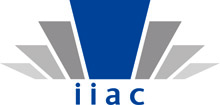
The Canadian securities industry has survived tough markets so far, but it doesn’t look like conditions are going to get any easier, and so consolidation is likely on the horizon according to the Investment Industry Association of Canada.
In a new report from its president and CEO, Ian Russell, the IIAC says that the securities industry has weathered difficult market conditions fairly well over the past six months. “Good results for the wealth management business provided a solid underpinning for the earnings of the integrated and retail boutique firms. On the other hand, difficult and treacherous trading conditions and a slowdown in investment banking activity contributed to a collapse in the earnings of the institutional boutiques,” it notes.
The IIAC reports that total industry operating profit will reach about $4 billion this year, down about 20% from last year’s level, although within the range of profitability for the past three years; and return on equity will average about 12%. “The impact of weak market conditions on corporate financing and trading operations in the second half of the year was responsible for the sharp earnings fall-off,” it says.
Within the industry, the integrated firms are holding up best and are expected to record total operating profits of about $3 billion for the year, which is only down 5% from a year ago. Institutional firms are taking the hardest hit, with operating profit down 16% year-over-year for the January-September period, and it estimates that profit for the year will be down about 50% to $750 million this year, its lowest level since 2004.
On the purely retail side, the IIAC reports that the retail introducer firms have performed much better than the larger retail self-clearing firms. Operating profit for the introducer group totaled $95 million in January-September 2011, up 29% year-over-year, it says. Whereas the self-clearing retail firms, which account for two-thirds of the retail boutique business, have struggled, generating operating profit for the nine months ended September that was down 8% year-over-year. The problem for these firms is the significant investment banking and securities trading businesses they have alongside their retail businesses, which have run into serious problems.
Nevertheless, the IIAC says that the better performance of the retail introducer firms “belies strong headwinds for the group next year”. It predicts that retail earnings performance will move steadily lower in response to continued weak markets. And, operating costs will continue to rise as compliance requirements increase. These costs were up 10% in the past year, the IIAC says. And, it reports that, in response, “The larger firms have moved aggressively to reduce broker pay-out grids sharply for lower gross revenue levels, and to eliminate low revenue producing brokers.”
Looking ahead, with the ongoing sovereign debt problems in Europe and fiscal problems in the U.S. too, the IIAC predicts that “market turbulence and sub-par equity markets will keep pressure on the investment banking and trading businesses.”
As a result, it suggests that industry earnings will remain under pressure “Institutional firms will find it challenging to generate satisfactory earnings results. Grinding market volatility and the risk of an evaporating global recovery will also erode investor confidence and market participation, with feedback to a slowing in the retail business,” it says.
And this may well lead to more consolidation within the industry, it suggests. The IIAC notes that there have already been several strategic acquisitions over the past few years, and in the years ahead it foresees two likely types of industry structural change: the amalgamation of mid-tier firms to build strategic critical mass, and acquisition of smaller firms by the larger players.
The more likely development is the ongoing amalgamation among small firms in the industry, it says, noting that there are currently 113 firms earning gross revenues of less than $20 million a year. “Many of the 81 retail introducers will find the going especially difficult, both from a slowing in the retail business and phased implementation of the Client Relationship Model with significant compliance requirements for client suitability, conflict of interest management, account disclosure and portfolio performance reporting,” it says.
And, it suggests that the 41 institutional introducer firms, which focus on market-making and investment banking mostly in the small cap and venture arenas, will also face difficult challenges. “The difficulty in sourcing risk capital for small cap transactions will continue to complicate financings in public and private markets. Further, continued poor liquidity in venture markets will result in high risk of loss from equity market-making. Finally, the inability to build up capital reflecting poor retained earnings, coupled with ongoing risk of capital loss, could adversely impact the institutional boutique business,” it says; adding that this will likely “encourage strategic amalgamations among the introducer and self-clearing mid-sized institutional boutiques across the industry.”